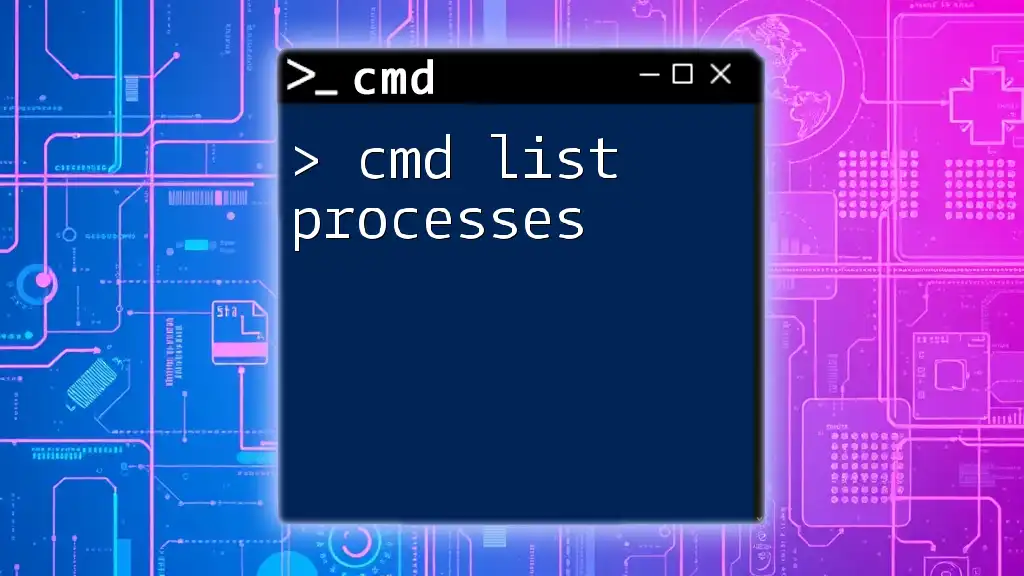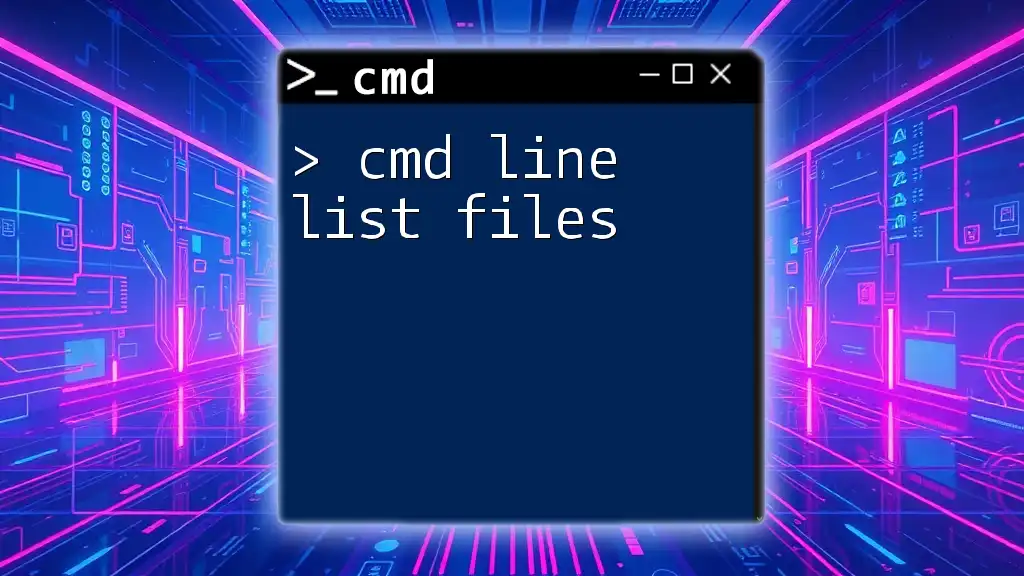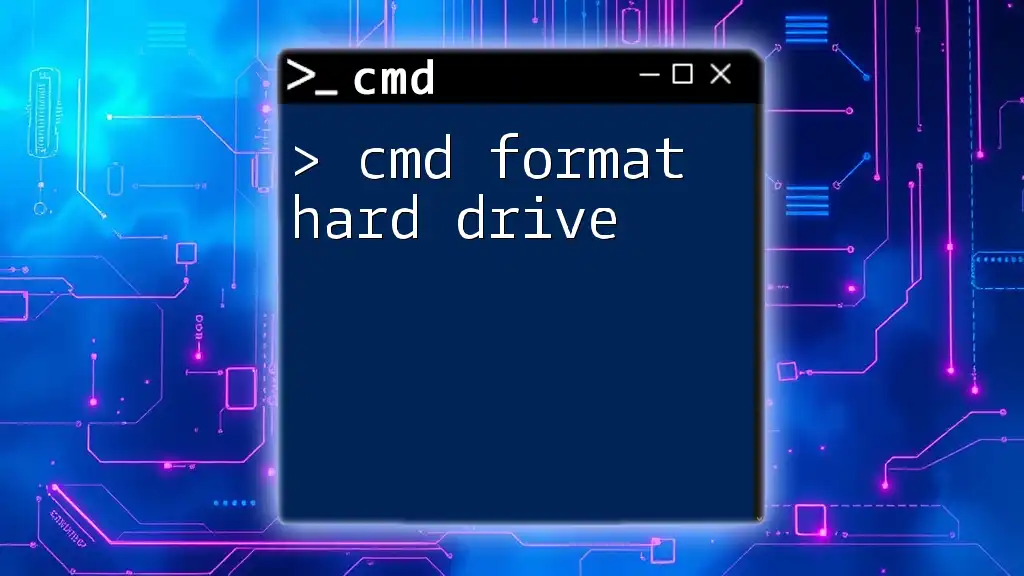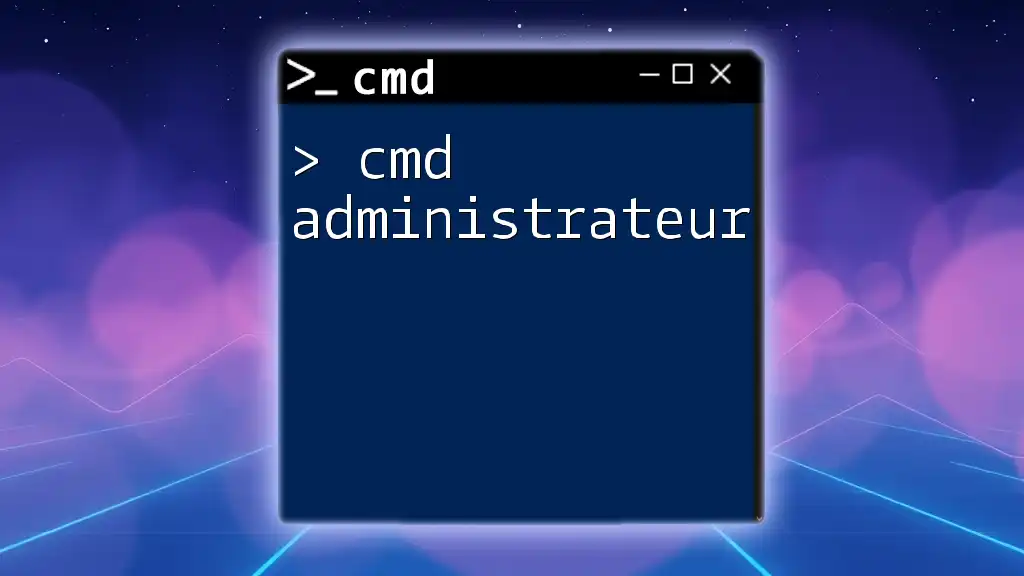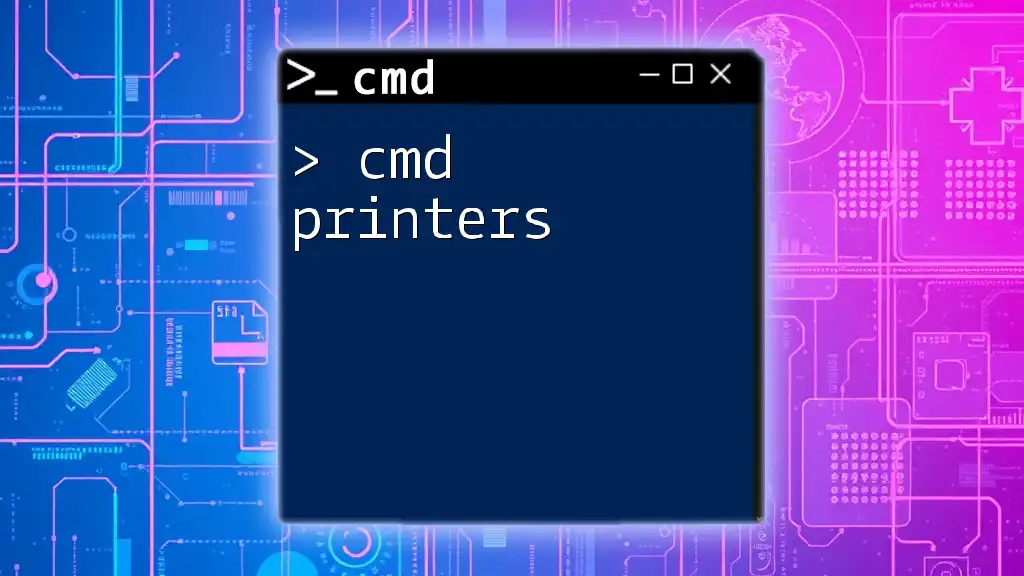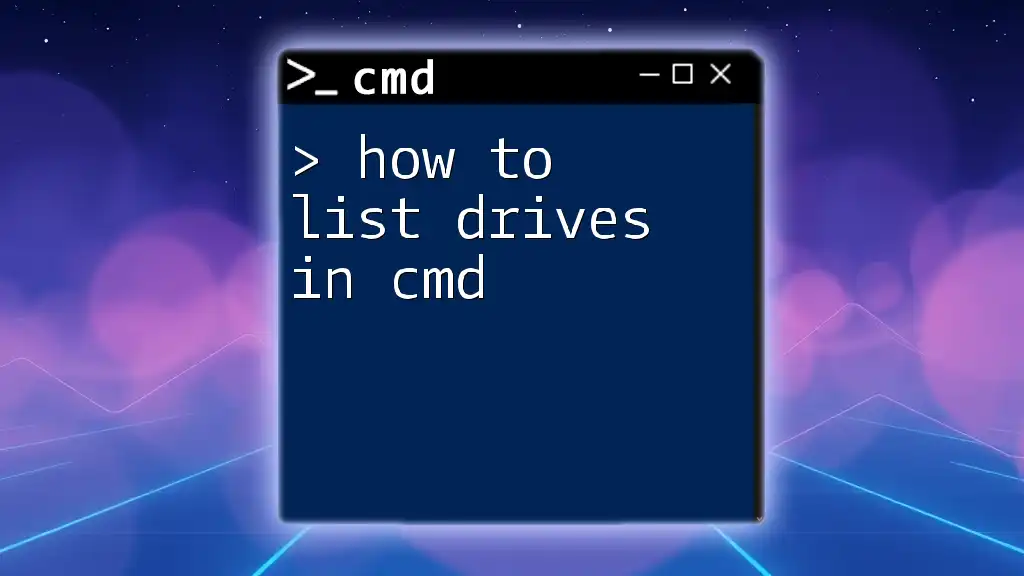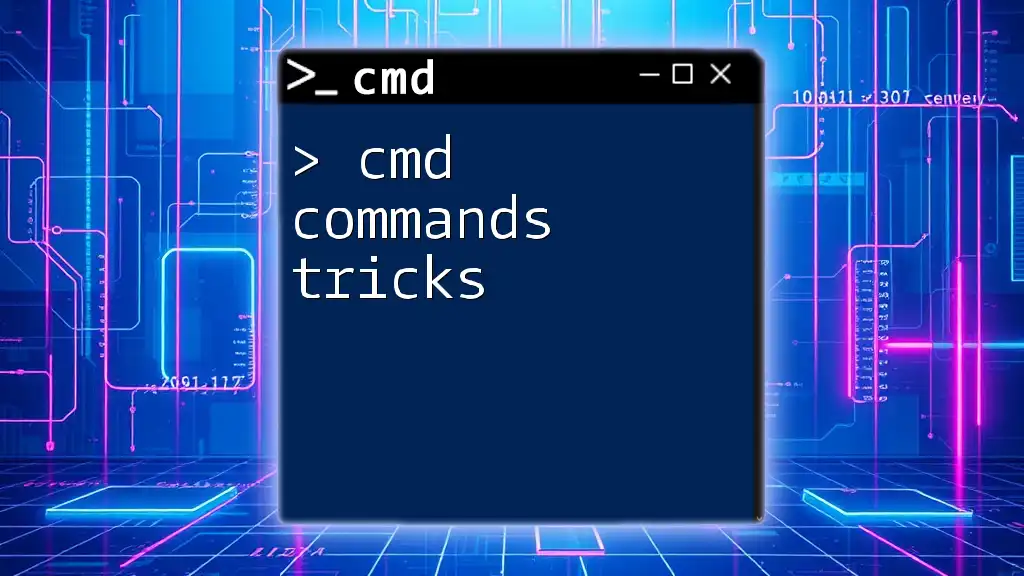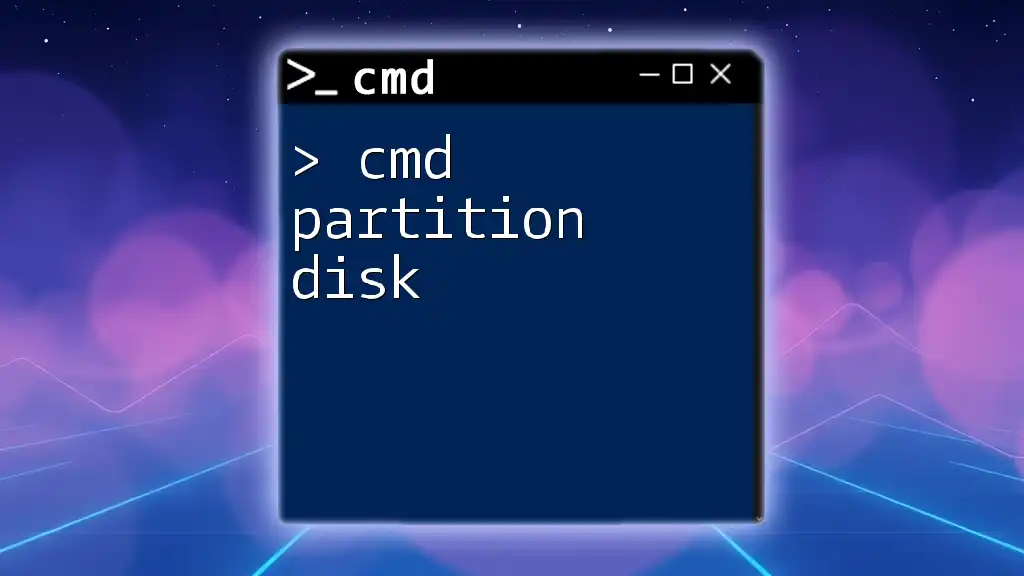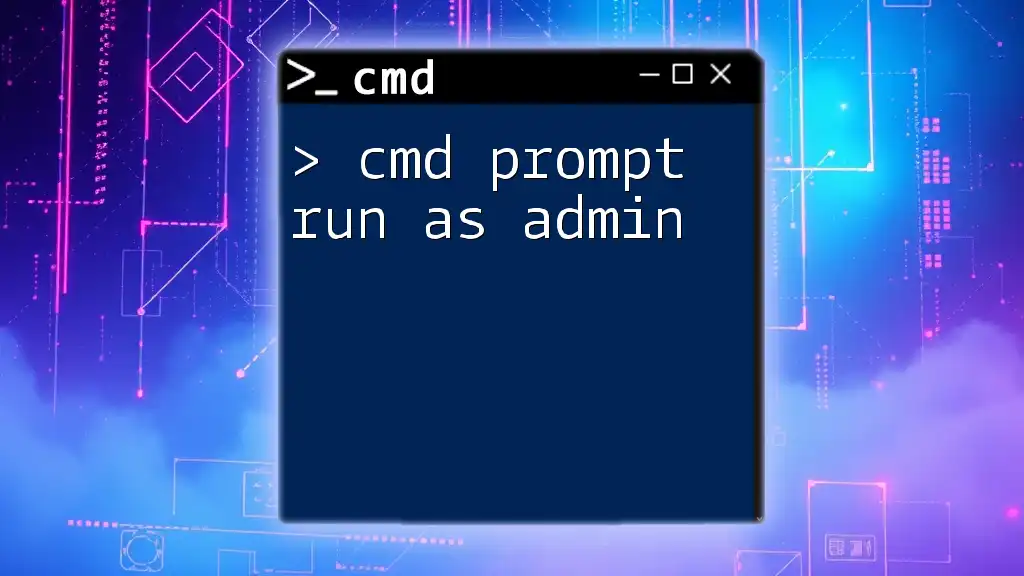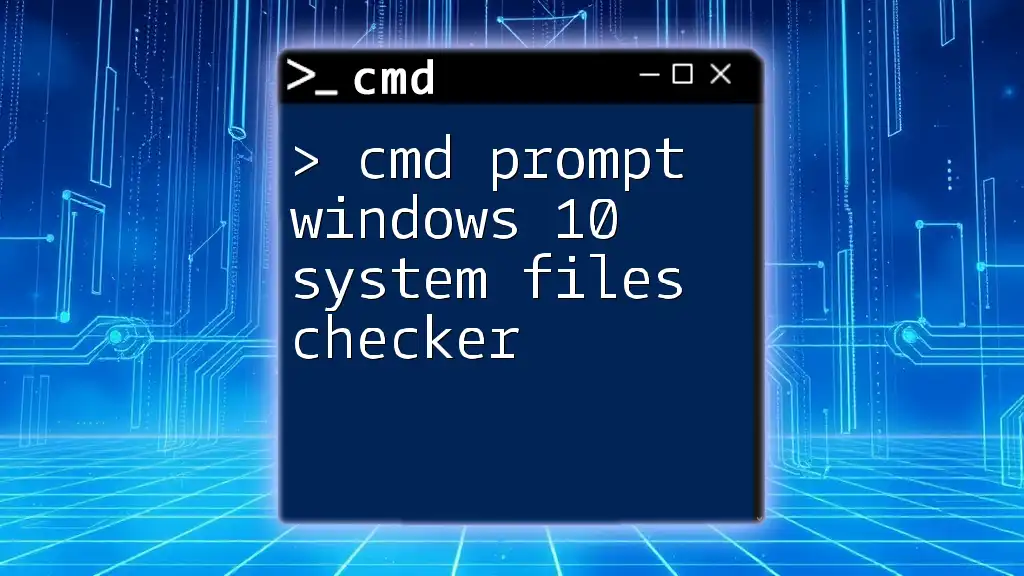To list the available drives in the Command Prompt, you can use the `wmic` command, which displays all disk drives on your system.
wmic logicaldisk get name
Understanding Drives in Windows
What are Drives?
In computing, drives represent storage devices that hold various types of data. They can be hard drives (HDDs), solid-state drives (SSDs), USB flash drives, external drives, or even optical drives such as CD/DVDs. Each of these drives is allocated a letter by Windows (e.g., C:, D:, E:) for easy identification and access. Understanding the types of drives is crucial for effective file management and system organization.
The Role of CMD in Drive Management
The Command Prompt (CMD) serves as a powerful alternative to the graphical user interface (GUI) in Windows. While navigating through directories and files visually can be intuitive, using CMD allows users to execute commands quickly and efficiently. It is especially beneficial for performing batch operations, automation, and scripting tasks. Learning to use CMD effectively can significantly enhance productivity, particularly for those who frequently manage file systems.
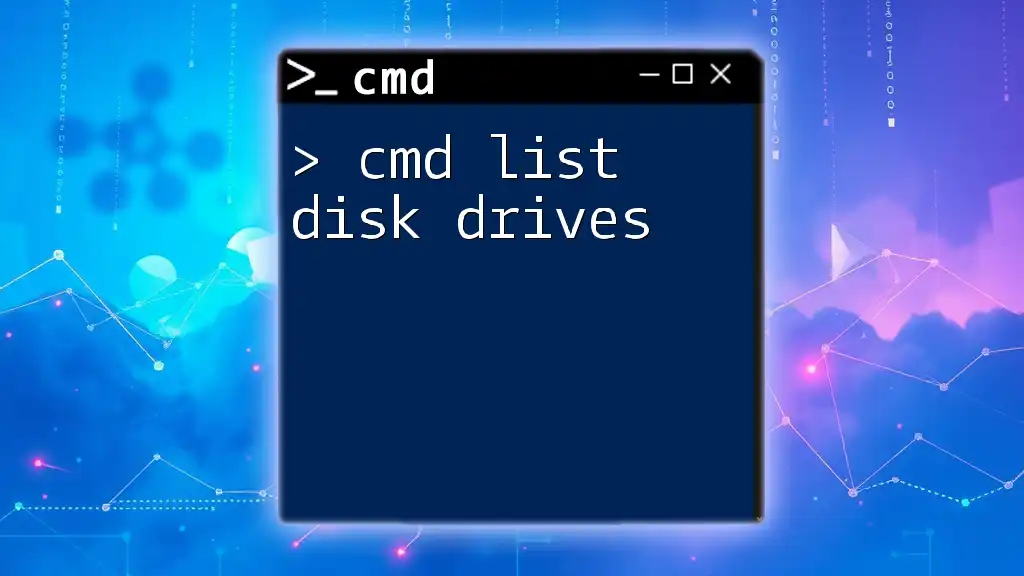
Listing Drives Using CMD
Basic Commands to List Drives
To get started with listing drives using CMD, you can use a few fundamental commands that provide straightforward access to drive information.
Introducing the “diskpart” Command
The diskpart command is a powerful tool for managing drives and partitions in Windows. It provides a command-line interface that allows you to view and manipulate disks directly.
To enter the diskpart utility, type the following command into CMD:
diskpart
Upon entering this command, you will be shifted to the diskpart interface, indicated by the prompt changing to "DISKPART>."
Listing Drives with Diskpart
Using the “list volume” Command
Once inside diskpart, you can list all available volumes (representing both drives and partitions) using the following command:
list volume
This command will display a comprehensive list of volumes on your system, along with their respective information, such as:
- Volume Number
- Drive Letter
- Label (Volume Name)
- File System Type
- Size
- Status
Understanding this output is essential, as it helps you identify drive characteristics, which can inform decisions about file management and organization.
Alternative Methods to List Drives
Using the “wmic” Command
Another method for listing drives is through WMIC (Windows Management Instrumentation Command). This command allows you to invoke a range of management tasks.
To simply display the drive letters, use:
wmic logicaldisk get name
This command yields a clean list of the current drive letters available on your system, providing a quick reference.
Using the “fsutil” Command
The fsutil command provides another alternative for checking available drives. It is mainly used for file system tasks, but it can also list drives as follows:
fsutil fsinfo drives
The output will show all drives recognized by Windows, allowing users to view not just the letter assignments but also the types of drives present on the system.
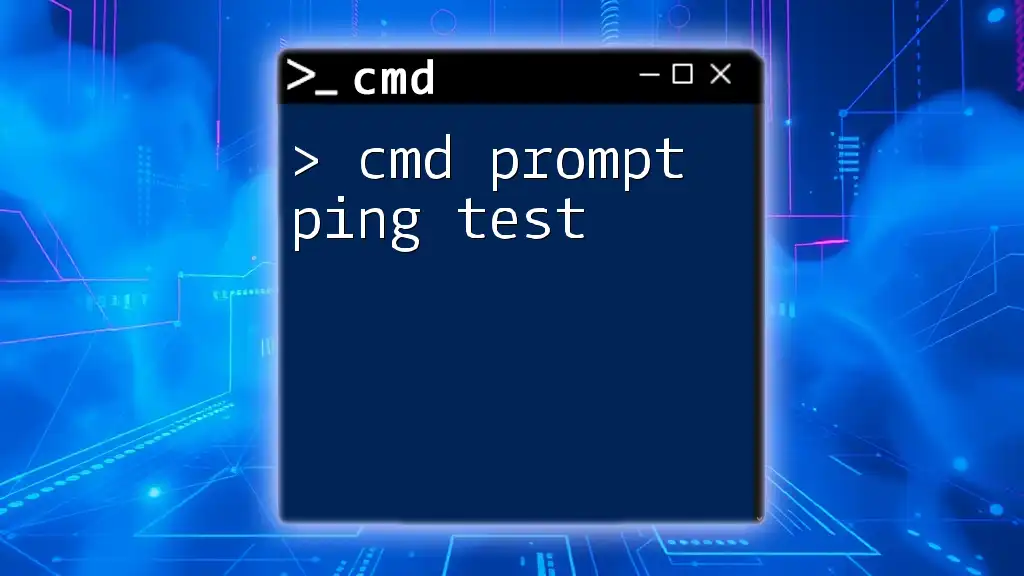
Interpreting Drive Listings
Understanding Drive Types and Features
Understanding the different drive types is crucial for effective management. Each type serves distinct purposes:
- HDDs: Traditional hard disk drives that offer larger storage at a lower cost.
- SSDs: Solid-state drives that are faster and more reliable but generally more expensive.
- Removable Drives: USB drives and SD cards that facilitate portability and external backups.
Knowing the file system types such as NTFS and FAT32 is also beneficial, as it can affect file transfer capabilities and the maximum file size supported.
Identifying Drive Letters
Drive letters are essential for navigating your file system through CMD. Understanding how CMD assigns these letters allows for better management of data. For example, the C: drive typically represents the operating system, while D: might be used for CD/DVDs or additional storage.
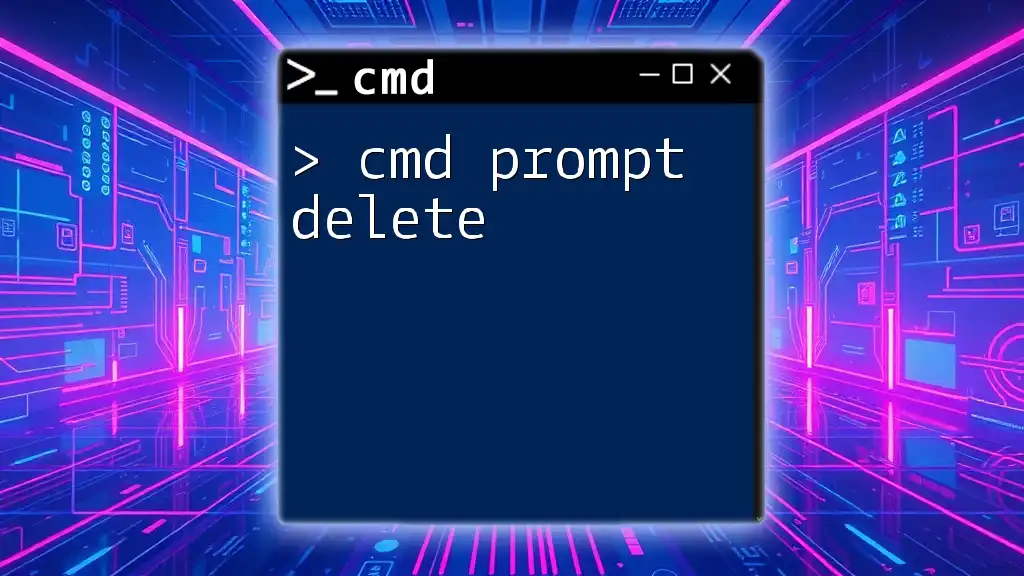
Advanced Commands for Drive Management
Getting Detailed Information About a Drive
Using Diskpart for Detailed Views
When you want more specific information about a drive, you can use diskpart commands to select the volume and display detailed attributes.
First, select the desired volume:
select volume <volume_number>
Then, execute the following command to retrieve detailed information:
detail volume
This will provide insights such as the drive's file system, capacity, free space, and health status.
Checking Drive Health
Using the “chkdsk” Command
To ensure the integrity of your drives, the chkdsk command is invaluable. It checks for file system errors and indexes the drives.
You can check your main drive (typically C:) with this command:
chkdsk C:
The output will inform you about any detected issues and provide options for repairs, which is particularly useful for maintaining drive health and data integrity.
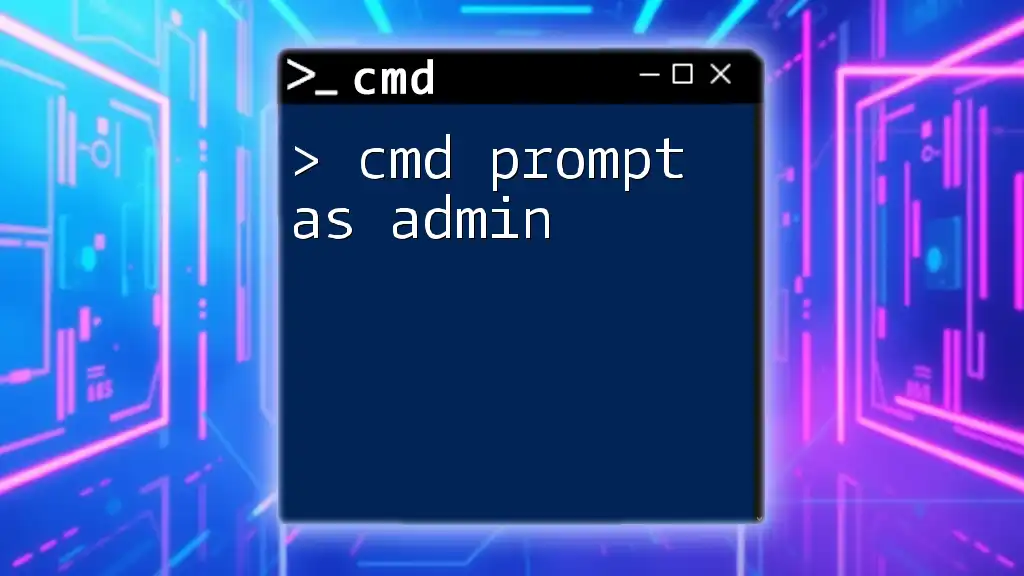
Automating Drive Listings with Batch Scripts
Basics of Batch Scripting
Batch scripting allows users to automate repetitive CMD commands, enhancing efficiency. You can create a simple batch file to list drives automatically.
To create a basic script that lists your logical drives, write this code in a text editor and save it with a `.bat` extension:
@echo off
wmic logicaldisk get name
pause
This script will run the wmic command each time it is executed, displaying all drive letters without searching manually through CMD.
Running the Batch File
To execute this batch script, navigate to the directory where it is saved and double-click on the file. The CMD window will open, and the script will run, providing you with a quick overview of your drives.
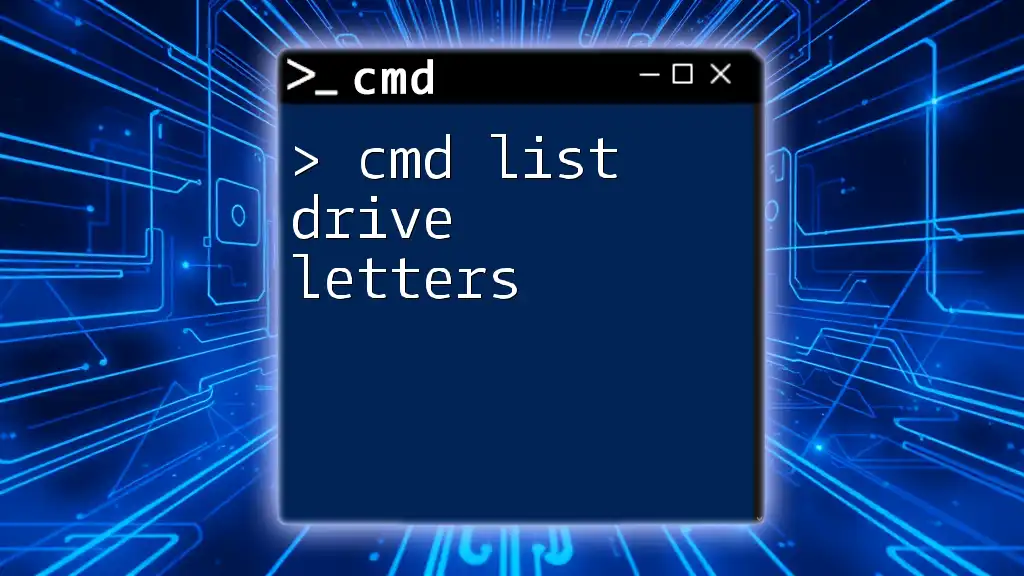
Conclusion
In this guide, a comprehensive overview of how to use CMD to list drives was provided, from basic commands to more advanced techniques. Understanding how to efficiently navigate your drives using CMD can vastly improve your file management capabilities. Regular practice with these commands will bolster your command line skills, making you more adept in the Windows environment. Empower yourself further by continuing to explore CMD and its vast functionalities for an even more profound mastery of your system.

Additional Resources
For additional insights on CMD commands, consider exploring the official Microsoft documentation or community forums. Regularly practice and apply these commands to familiarize yourself with their usage and complexities.







